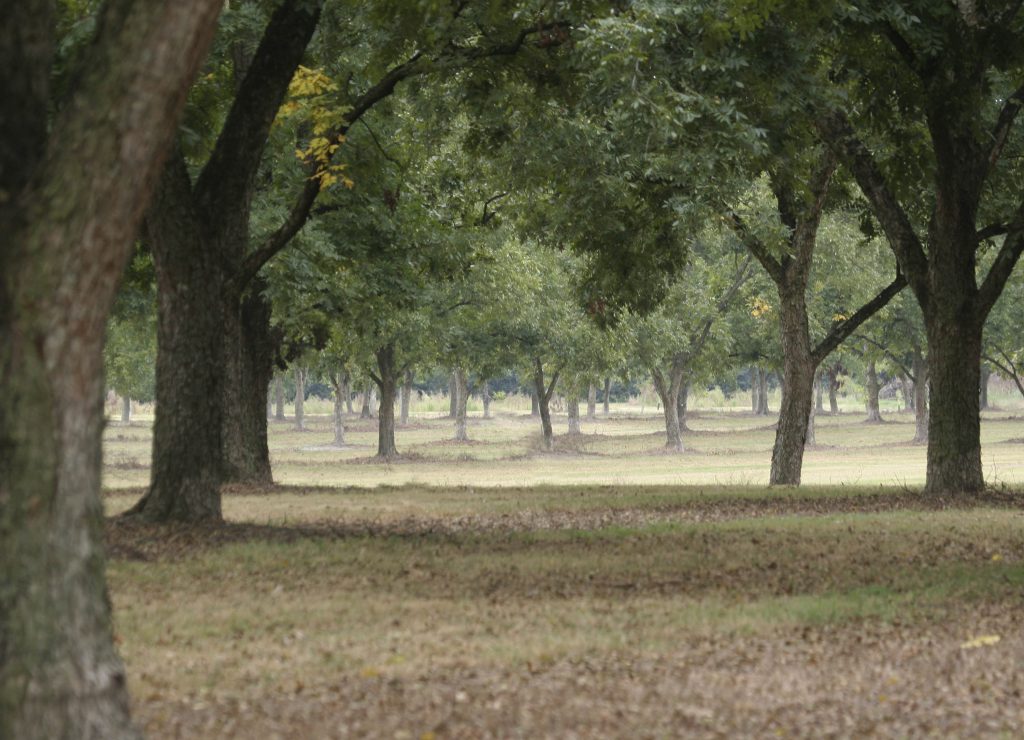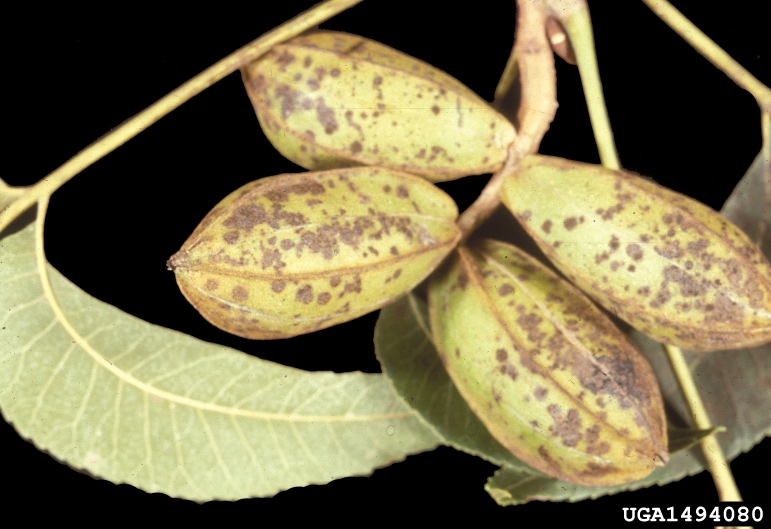Pecans have long been an important and high-value agricultural crop, and that hasn’t changed as we progress through the 21st century. Pecans are native to the USA and Mexico, with their natural habitat being riverbanks and floodplains west of the Mississippi River from Kansas through Texas to Tennessee. Many improved cultivars have been developed; 275 million pounds of pecans were produced in 2022 with bearing tree acreage at 407,000. The total US production value of pecans in 2022 was $493 million, a slight decrease from the previous year, but still strong.
Since pecans are known to be a valuable crop, many growers have planted orchards throughout the Florida Panhandle. Recently I have received several questions about why their young trees are not producing when reaching bearing age, or why older orchards are non-productive. Here I will be explaining methods to determine the cause of non-bearing trees and expound upon actions that might correct the issues.
–
There are several reasons why pecans might be nonproductive in Florida orchards:
- Soil conditions: Sometimes soil conditions are not appropriate for consistent production. Soils may be too sandy and excessively well-drained or too heavy and not well-drained enough. Additionally, the pH might be too low or too high.
– - Nutrition: Another reason for the lack of nut production could be inadequate fertilization. Pecans require a balanced amount of N-P-K as well as other macro and micronutrients, in particular zinc. Deficiencies of one or more nutrients can limit or eliminate nut production.
– - Plant structure: Sometimes older trees get too dense and begin to shade themselves into lower production. Strategic pruning to allow sunlight to get to productive branches on old trees will increase production in most cases.
– - Disease: Lastly, the incidence of pecan scab will reduce production substantially during years when scab is an issue. Pecan scab is a fungal disease that flourishes during wet/humid warm summers such as 2023.
–
When planning an orchard, the first place to start is to determine if the soil is suitable for pecan production. Do a percolation test to determine the rate of water movement through the soil. To do a percolation test, dig a hole 3 feet deep and 10 inches wide and fill it with water. If the water drains out of the hole in an hour, this might indicate perfect soil for pecan production, which is a rich sandy loam. If the soil drains faster, the sand content might be too high. This indicates that increased attention will be needed to fertilization frequency and irrigation. If the soil drains slower, such as in 1-2 days, this indicates that the soil drains poorly and pecans will not perform well in this area. Soil tests should also be done to determine the pH and nutrient levels of the soil.
If established orchards are having problems with production, soil tests should be performed to determine the pH and nutrient levels of the soil. Soil pH below 6.0 indicates a need for the addition of dolomitic lime, while pH above the 7-7.5 range will reduce the availability of essential soil nutrients of sulfur and iron. Zinc is a particularly important nutrient for pecan production. While soil zinc rates in the range of 30-100ppm are acceptable, it is beneficial to conduct a leaf tissue analysis to understand the amount of zinc in the plant and correct deficiency if necessary. According to research conducted at UGA Extension, pecan zinc tissue rates should be between 50-100 ppm for good nut production.
After analysis of soil and tissue, fertilization and/or liming may be necessary to correct deficiencies indicated by soil and tissue tests. Once these deficiencies are corrected through multi-year efforts, often nut production will rise to normal levels.
In older orchards, two issues often limit nut production, excessive shading, and pecan scab susceptibility. The issue of excessive shading is easily overcome by selective pruning of lower, shaded branches to allow the sun to reach neighboring productive branches and trees. Sometimes growers go as far as to thin out older, nonproductive trees to allow more light to reach the more productive trees.
Pecan scab susceptibility is oftentimes more complicated since many older cultivars are not scab resistant. Pecan scab is a fungal disease that causes black spots on leaves and green pecan hulls. In severe infections, nuts will not fill out and drop prematurely, thus ruining that year’s pecan crop. For larger orchards, it is economically viable to treat trees with fungicides to prevent pecan scab. This must be done with specialized spray equipment designed to direct sprays high up into the leaf canopy. Application should begin after bud break and continue until shell hardening begins. Many different fungicides are available to treat pecan scab in commercial production, but active ingredients and brand names change seasonally. Some of the more common fungicide active ingredients available are tebuconazole, propiconazole, azoxystrobin, theophanate-methyl, and ziram.
Pecan Scab symptoms on the nut shuck (Photo Credit: University of Georgia Plant Pathology , University of Georgia, Bugwood.org)
–
If planning new or expanding existing orchards, care must be taken to select scab-resistant cultivars. Elliot and Sumner are historically known to be scab resistant and should still be included in plantings, but many new cultivars with additional scab resistance have been released including Excel and Amling.
Regardless of your pecan issue, there are plenty of scientifically proven methods to help you determine what is wrong and provide you solutions to poor nut production. Begin by contacting your local extension agent, as they can help you determine what methods need to be utilized to correct pecan production problems.
Resources and References:
2023 USDA Pecan Production Bulletin
USDA- The Pecan Species
Foliage and Fruit Susceptibility of Pecan Provenance Collection to Scab
Before You Plant, Evaluate Your Soil – Pecan South Magazine
Pecan-Fertilization.pdf (uga.edu)
2023 Commercial Pecan Spray Guide (UGA)
 0
0



